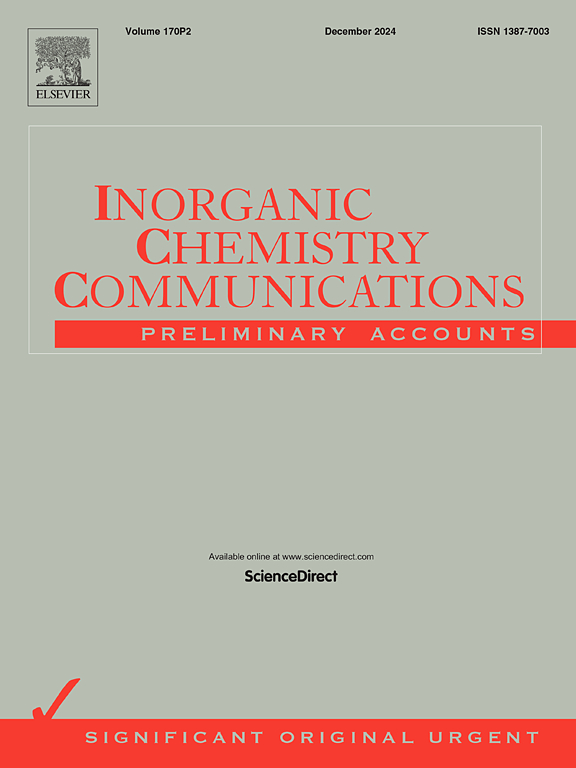三金属磁性纳米复合材料:一种精通亚甲基蓝和扑热息痛降解的多相芬顿样催化剂
IF 4.4
3区 化学
Q1 CHEMISTRY, INORGANIC & NUCLEAR
引用次数: 0
摘要
人为活动导致有机污染物的释放,由于其潜在的污染,对环境健康构成重大危害。针对这一问题,采用简单沉淀法和化学还原法合成了一种新型非均相三金属零价铜钴负载磁铁矿(nMZVCC)纳米复合催化剂。通过FTIR、XRD、EDS和XPS等分析技术证实了零价铜和钴纳米颗粒在甘氨酸涂层磁铁矿芯上的有效固定。与双金属nMZVC纳米复合材料相比,三金属nMZVC纳米复合材料对亚甲基蓝(60 min)和扑热息痛(180 min)的降解效率分别提高了96%和95%。通过对pH、H2O2浓度、催化剂用量、污染物用量等参数的优化,nMZVCC的催化效率达到峰值。吸附研究结果表明,吸附对nMZVCC纳米复合催化剂催化的非均相类fenton降解起关键作用。通过清除剂试验,羟基自由基成为参与污染物降解机制的主要反应物质。催化剂的可重复使用性在连续三个循环中保持了效率(第三个循环的去除率为76%),强调了其在废水处理中的应用前景。本文章由计算机程序翻译,如有差异,请以英文原文为准。

Trimetallic magnetic nano-composite: A proficient heterogeneous Fenton-like catalyst for methylene blue and paracetamol degradation
Anthropogenic activities have resulted in the release of organic pollutants that present significant environmental health hazards due to their potential for contamination. In response to this concern, a novel heterogeneous trimetallic zerovalent copper and cobalt-loaded magnetite (nMZVCC) nano-composite catalyst was synthesized utilizing simple precipitation and chemical reduction methodologies. The effective immobilization of zerovalent copper and cobalt nanoparticles onto a glycine-coated magnetite core was corroborated through analytical techniques such as FTIR, XRD, EDS, and XPS. The trimetallic, nMZVCC, nano-composite exhibited enhanced catalytic efficacy in the degradation of methylene blue (96 %) in 60 min. and paracetamol (95 %) in 180 min. When compared with bimetallic nMZVC nano-composite. The peak catalytic efficiency of nMZVCC was attained through the meticulous optimization of parameters including pH, H2O2 concentration, catalyst dosage, and pollutant dosage. The findings from the adsorption study indicate that adsorption plays a pivotal role in influencing the heterogeneous Fenton-like degradation facilitated by the nMZVCC nano-composite catalyst. Hydroxyl radicals emerged as the primary reactive species involved in the mechanisms of pollutant degradation, as elucidated through scavenger tests. The reusability of the catalyst demonstrated a maintained efficiency (76 % removal efficiency in the third cycle) across three successive cycles, underscoring its promising applicability in wastewater treatment.
求助全文
通过发布文献求助,成功后即可免费获取论文全文。
去求助
来源期刊

Inorganic Chemistry Communications
化学-无机化学与核化学
CiteScore
5.50
自引率
7.90%
发文量
1013
审稿时长
53 days
期刊介绍:
Launched in January 1998, Inorganic Chemistry Communications is an international journal dedicated to the rapid publication of short communications in the major areas of inorganic, organometallic and supramolecular chemistry. Topics include synthetic and reaction chemistry, kinetics and mechanisms of reactions, bioinorganic chemistry, photochemistry and the use of metal and organometallic compounds in stoichiometric and catalytic synthesis or organic compounds.
 求助内容:
求助内容: 应助结果提醒方式:
应助结果提醒方式:


